Barber poling and pooling describe two frequent ways in which variegated yarn behaves badly. Of course, “behaving badly” is entirely in the eyes of the beholder, but that’s another story. Barber poling describes one or more yarn colors aligning row after row to form diagonal stripes, and pooling describes great blobs of color formed as knit rows stack the same color atop one another. Usually relentlessly.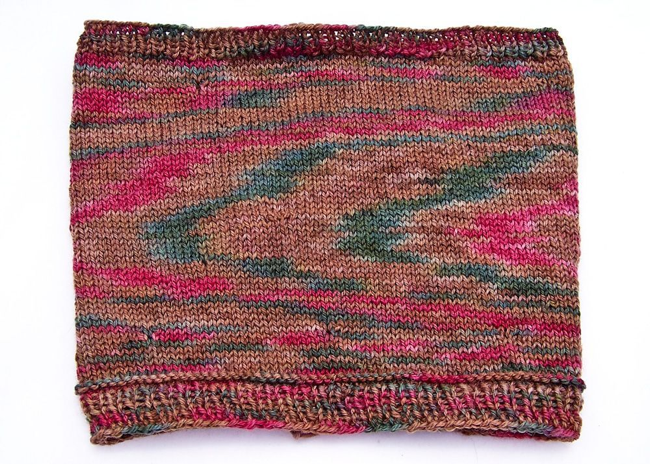
This photo depicts a little exercise in the yarn mathematics of misbehavior. Unlike family members and coworkers, variegated yarn pooling and barber poling is entirely mathematical, ergo manageable, if not exactly predictable. Variegated yarn is almost always dyed in a set skein size, so colors repeat themselves every yard, or meter, or some such. If you knit exactly one round of a skein into one row or round of a garment, you’ll get some version of barber poling or pooling.
Barber Poling and Pooling Variables
The magic is all in your stitch count, your knitting gauge, and the yarn skein diameter. Of these three variables, let’s forget the last one. By the time a knitter has faced up to the inexorable fact that his or her marvelous (and possibly pricey) yarn is misbehaving in a project, changing yarns or patterns is low on the list of appealing choices.
The swatch above was created as follows. The piece is worked in the round, and I cast on enough stitches that each round is almost – but not quite – large enough to produce some color stacking. This coaxed the best behavior out of my variegated yarn (Intrepid Tulips Sock in colorway Sweden) in the early rounds. The bottom panel of this next photo shows these early rounds isolated for your viewing pleasure. (We’ll return to take on the top panels in these pics further along.)
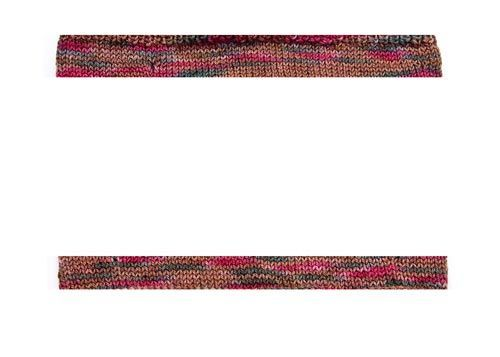
I then increased a few stitches in one round, and continued to knit for another inch or so. Tadaaaah! Gentle barber poling occurs, creating a left-leaning diagonal in the bottom “panel.”
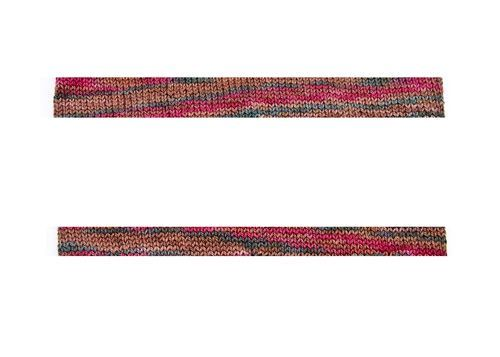
Yep. Increase a couple more stitches, and aggressive barber poling ensues.
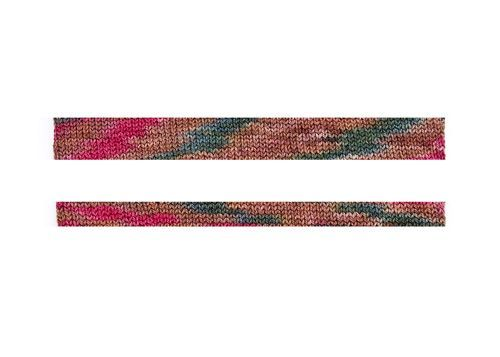
Increase a few more stitches, and bingo! Full on pooling!
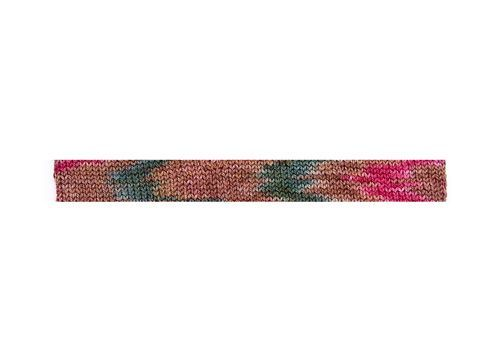
N.B. I’m not increasing in every round. A few extra stitches in one round changes the stitch count per round for all the following rounds, and stitch count is the variable we’re playing with here.
Now, once we’ve achieved true pooling, and our colors are stacked into vertical, if wiggly stripes, what might happen were we to continue the experiment and add yet a few more stitches? Aggressive barber poling again, but leaning right this time. (Photo #3. Here’s where the top panels in the photos become relevant.) And predictably, adding a few more stitches after every inch of knitting shifts the color action back through Gentle Barber Poling (Photo #2) and into well behaved yarn again (photo #1).
The moral of the barber poling and pooling story
- If your otherwise lovely yarn and pattern produce left-spiraling barber poles, decrease a couple stitches or tighten your gauge. Changing to smaller needles can also do the trick, though it often results in a more extreme change than you really want, depending on yarn weight, garment, piece, etc.
- If your charming pattern and irresistible yarn produce right-spiraling barber poles, increase a couple stitches or loosen your gauge. You might also try larger needles, bearing in mind the aforementioned caveats.
- If you find yourself knitting in the deep end of a serious color pooling problem, either of the above solutions will work, but you may need to adjust by a handful of stitches rather than just a few. This might be exactly the situation in which to reconsider needle size selection.
